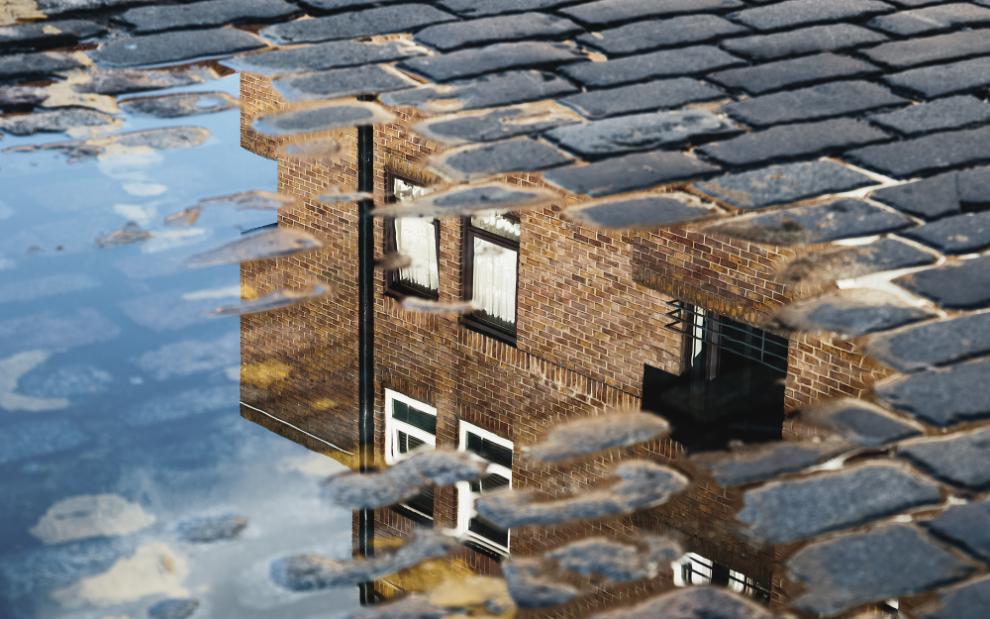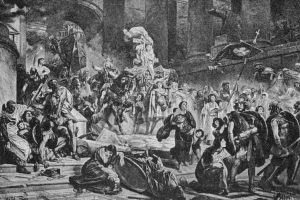When Vincent de Paul entered the priesthood, he was largely motivated by ambition. As a priest, he served the powerful de Gondi family as a tutor and spiritual director. Then, in 1617, he had a conversion experience; in the small French village of Folleville, Vincent encountered the equality and dignity of people experiencing poverty. Transformed, he began his mission to serve the spiritual and material needs of the poor.
Faced with suffering amid complicated social realities, Madame de Gondi asked Vincent, “What must be done?” That question would become key to Vincentian spirituality.
In 1643, King Louis XIII left Vincent de Paul the equivalent of a million dollars as an endowment for this mission. After years of war and plague, France had widespread poverty and many orphans. Vincent used the bequest to build 13 small houses around Saint-Lazare, the headquarters of the Congregation of the Mission in Paris.
Today, the Vincentian family continues this mission to provide safe housing for people without homes. In 2018, the Famvin Homelessness Alliance launched the 13 Houses Campaign to refocus attention on safe housing, with the goal of helping 10,000 individuals by 2024. With 102 partner projects in 64 countries, they achieved this goal by December 2023.
Homelessness and housing insecurity remain both global and local problems. Worldwide, an estimated 100 million people experience homelessness, and 1.6 billion people lack adequate housing and basic services. In the United States, the Department of Housing and Urban Development reports that 653,104 persons experienced homelessness last year. According to estimates from the U.S. Department of Health and Human Services, 17.6 million households, including renters and owners, were severely cost-burdened in 2019, spending more than 50 percent of their incomes on housing alone. In 2023, the United Nations’ Special Rapporteur for Human Rights, Balakrishnan Rajagopal, said that the number of our siblings living with housing insecurity is projected to rise to close to 3 billion by 2030.
In January 2024, I had the privilege of seeing the 13 Houses Campaign in action at Famvin’s International Conference on Slum Dwellers in Manila—“Empowering Individuals and Communities: Vincentian Action in Slums.” The World Bank estimates that in 2020 about 37 percent of the urban population in Manila lived in slums. By definition, slums are informal or inadequate housing, often without adequate space, access to affordable clean drinking water, proper sanitation, and secure tenure. The Vincentian Missionaries Social Development Foundation, Inc. in Quezon City, just north of Manila, is committed to addressing the insecurity and dangers of slum-dwelling by building community alongside housing.
Operations manager Celestino “Intoy” Rosete Jr. explained that the Vincentian Foundation’s approach to sustainable development includes a dynamic and integrated focus on pabahay (housing), pabuhay (livelihood), and pamayanan (community). The foundation beautifully adapts Pope Francis’ emphasis on land, labor, and lodging to incorporate the community more directly.
Nicknamed the Bamboo Village, the Vincentian Foundation project I visited is the outcome of a partnership with the Base Bahay Foundation that utilizes bamboo concrete frame technology to build typhoon- and earthquake-resilient houses. But housing is just the beginning at this dedicated village of accessible homes for families with either a child with special needs or an elderly family member. Rosete said that the goal of the project is “to build communities of love and generosity, where everyone feels and experiences a sense of belonging.” In addition to houses, the site includes gardens, a community center, and small-business spaces. The village is a long-term but temporary option; the families have housing security while they work toward the goal of purchasing land and owning their own houses. As I walked around the Bamboo Village, the vibrancy and interconnectedness fostered by housing security were clear.
“Charity is the cement which binds communities to God and persons to one another,” contended St. Vincent. By bringing together different segments of society, Vincent organized and built communities of charity that were as strong as cement. That mission continues through the work of the Vincentian Foundation in Manila and here in the United States. In more than 4,000 parishes throughout the United States, St. Vincent de Paul societies continue to coordinate charity for their neighbors in need.
“We are called to acknowledge every poor person and every form of poverty, abandoning the indifference and the banal excuses we make to protect our illusory well-being,” reminded Pope Francis in his 2023 World Day of the Poor message. The call of discipleship is a call to encounters like those St. Vincent experienced in the village of Folleville. This is a particular challenge, Pope Francis explained: “The pressure to adopt an affluent lifestyle increases, while the voices of those dwelling in poverty tend to go unheard.”
As I reflect on what I learned in Manila, I realize the broader systemic challenges require an integrated approach. We must focus on building both dignified housing and thriving communities, resisting indifference to people who are most vulnerable to poverty’s challenges. Facing our communities’ housing insecurity and homelessness, we are continually called to ask, “What must be done?”
This article also appears in the May 2024 issue of U.S. Catholic (Vol. 89, No. 5, pages 40-41). Click here to subscribe to the magazine.
Image: Shutterstock/I Wei Huang












Add comment